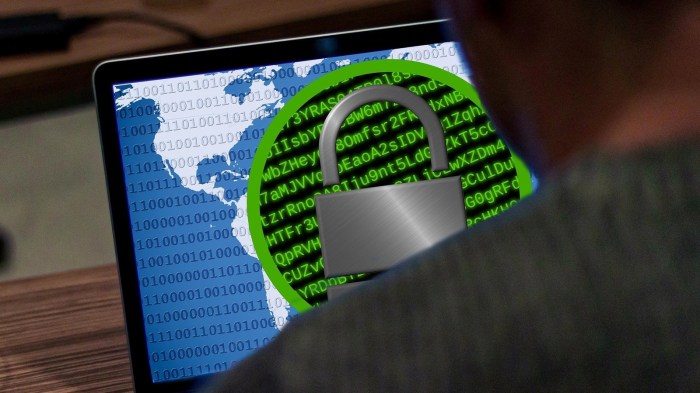Fresh call to ban ransomware payments divides cybersecurity experts – A fresh call to ban ransomware payments has ignited a heated debate within the cybersecurity community, dividing experts on its effectiveness and potential consequences. This controversial proposal aims to curb the lucrative ransomware business by eliminating the incentive for attackers to demand payment.
While proponents argue that a ban would protect victims and reduce the frequency of attacks, opponents warn of unintended consequences, including increased data destruction and the emergence of new attack strategies.
The debate revolves around the complex interplay of ethical, legal, and practical considerations. Critics argue that paying ransoms, while ethically problematic, is often the only way to recover critical data and avoid significant business disruptions. They also point to the potential for a ban to drive attackers towards more destructive tactics, as they may feel less pressure to negotiate.
On the other hand, proponents argue that a ban would send a strong message to cybercriminals, discouraging them from engaging in ransomware attacks altogether.
The Growing Threat of Ransomware: Fresh Call To Ban Ransomware Payments Divides Cybersecurity Experts
Ransomware has become a pervasive threat, impacting individuals, businesses, and governments worldwide. Its evolution has seen a dramatic increase in sophistication and impact, demanding serious attention from cybersecurity professionals and policymakers alike.
The Evolution of Ransomware Attacks
Ransomware has evolved significantly from its early days, becoming increasingly sophisticated and difficult to combat. Early ransomware attacks were often simple and targeted individual users, using methods like encrypting files and demanding a small ransom payment. However, today’s ransomware attacks are much more complex, employing advanced techniques like:
- Targeted attacks:Ransomware actors now often target specific organizations or individuals, conducting extensive reconnaissance to identify vulnerabilities and tailor their attacks accordingly.
- Double extortion:In addition to encrypting data, attackers may also steal sensitive information and threaten to leak it publicly if the ransom is not paid. This creates additional pressure on victims to comply.
- Use of malware:Ransomware is often delivered through various methods, including phishing emails, malicious websites, and exploit kits, making it difficult to detect and prevent.
- Automated attacks:Ransomware actors are increasingly using automated tools and techniques to launch attacks at scale, allowing them to target a large number of victims simultaneously.
Financial and Operational Costs of Ransomware Attacks
Ransomware attacks have significant financial and operational consequences for victims. A recent study by Cybersecurity Ventures estimated that global ransomware damage costs will reach $265 billion by 2031.
- Financial losses:Ransomware victims face direct financial losses from paying the ransom, as well as indirect costs associated with downtime, data recovery, and legal fees.
- Operational disruption:Ransomware attacks can severely disrupt business operations, leading to production delays, customer service interruptions, and reputational damage.
- Data loss:Even if the ransom is paid, there is no guarantee that victims will regain access to their encrypted data. In some cases, data may be permanently lost or corrupted.
Motives Behind Ransomware Attacks
Ransomware attacks are primarily driven by financial gain, but other motives can also play a role. The primary motive is to extort money from victims by encrypting their data and demanding a ransom for its decryption.
- Financial gain:Ransomware actors often demand large sums of money, which can be paid in cryptocurrencies to maintain anonymity.
- Data extortion:In addition to encrypting data, attackers may also steal sensitive information and threaten to leak it publicly if the ransom is not paid.
- Disruption:Some ransomware attacks are motivated by a desire to disrupt operations or cause damage to specific organizations or individuals.
The Debate Over Ransomware Payments
The decision to pay a ransomware demand is a complex one, fraught with ethical, legal, and financial considerations. While paying might seem like the quickest way to regain access to critical data, it comes with significant drawbacks and risks. The debate over ransomware payments is highly contentious, with strong arguments on both sides.
Arguments For Paying Ransomware Demands
Paying a ransom might appear to be the most practical solution in some situations, particularly when organizations face a severe disruption to their operations. The primary argument for paying is the potential to recover critical data and minimize downtime.
- Data Recovery:Paying the ransom can be the only way to recover encrypted data, especially if backups are inadequate or unavailable. Organizations might face severe financial losses and reputational damage if they cannot restore critical data, making paying a ransom a seemingly necessary evil.
- Business Continuity:Ransomware attacks can cripple businesses, leading to significant financial losses and operational disruptions. Paying the ransom might allow organizations to resume operations quickly and avoid further economic damage.
- Negotiation Leverage:Paying a ransom can be seen as a way to establish a dialogue with the attackers and potentially negotiate a lower payment or more favorable terms.
Arguments Against Paying Ransomware Demands
While paying a ransom might seem like the easiest solution, it is often counterproductive and encourages further attacks.
- Encourages Future Attacks:Paying a ransom emboldens attackers and incentivizes them to target more organizations. This creates a vicious cycle where attackers become more sophisticated and demanding, leading to a surge in ransomware attacks.
- No Guarantee of Data Recovery:Even after paying the ransom, there is no guarantee that attackers will provide the decryption key or that the data will be recovered. Attackers may not deliver the key, provide a faulty key, or even leak the data publicly.
- Financial and Legal Consequences:Paying a ransom can have severe financial and legal consequences. Organizations may face penalties from regulators and insurance companies for paying ransom. Additionally, paying a ransom can be seen as funding criminal activity, which could have legal ramifications.
- Reputational Damage:Paying a ransom can damage an organization’s reputation. Customers and partners may lose trust in an organization that has paid a ransom, fearing that their data may be compromised.
Ethical and Legal Implications of Paying Ransom
The ethical and legal implications of paying ransom are complex and often debated.
- Ethical Concerns:Paying a ransom can be seen as rewarding criminal activity and encouraging further attacks. It can also be argued that paying a ransom undermines the rule of law and encourages a culture of impunity.
- Legal Ramifications:In some jurisdictions, paying ransom may be illegal, and organizations may face penalties for funding criminal activity. Additionally, paying ransom may violate sanctions or other legal restrictions.
Examples of Organizations That Have Paid Ransoms
Several high-profile organizations have paid ransoms to ransomware attackers, with varying consequences.
- Colonial Pipeline:In 2021, Colonial Pipeline, a major fuel pipeline operator in the United States, paid a ransom of $4.4 million to regain control of its systems after a ransomware attack. The attack caused widespread fuel shortages and highlighted the vulnerability of critical infrastructure to ransomware attacks.
- JBS SA:In 2021, JBS SA, a major meat processing company, paid a ransom of $11 million to attackers who disrupted its operations. The attack resulted in production shutdowns and meat shortages, demonstrating the significant economic impact of ransomware attacks on global supply chains.
The Call for a Ban on Ransomware Payments

The escalating threat of ransomware has prompted a growing debate among cybersecurity experts and policymakers, with some advocating for a complete ban on ransomware payments. This controversial proposal aims to disrupt the ransomware business model by eliminating the financial incentive for attackers.
Rationale and Proponents of Banning Ransomware Payments
Proponents of a ransomware payment ban argue that it would significantly impact the profitability of ransomware attacks, deterring cybercriminals and ultimately reducing the number of attacks. They believe that by denying attackers their primary source of revenue, organizations would be less likely to become victims.
In this topic, you find that stockholm world class tech hub 6 startups and scaleups to watch is very useful.
- Government Agencies:The U.S. Department of Justice and the FBI have consistently urged organizations to refrain from paying ransoms, emphasizing that paying only encourages further attacks.
- Cybersecurity Experts:Many cybersecurity professionals argue that paying ransomware emboldens attackers and fuels the ransomware industry. They believe that a ban would force organizations to focus on proactive security measures, making them less vulnerable to attacks.
- Insurance Companies:Some insurance companies have begun to refuse coverage for ransomware payments, recognizing the risks associated with incentivizing attackers. They believe that a ban would create a more predictable and sustainable insurance market.
Potential Benefits of Banning Ransomware Payments, Fresh call to ban ransomware payments divides cybersecurity experts
A ban on ransomware payments could potentially offer several benefits:
- Reduced Attacker Incentives:By eliminating the financial reward for successful attacks, a ban could significantly reduce the attractiveness of ransomware as a criminal enterprise.
- Increased Security Focus:Organizations might be forced to prioritize cybersecurity investments and implement stronger security measures to mitigate the risk of attacks.
- Reduced Victimization:By discouraging ransomware payments, a ban could help reduce the number of organizations that fall victim to ransomware attacks.
- Protection of Critical Infrastructure:Banning ransomware payments could be particularly important for critical infrastructure sectors, where attacks can have significant societal and economic consequences.
Challenges and Drawbacks of a Ban on Ransomware Payments
Despite the potential benefits, a ban on ransomware payments faces significant challenges and potential drawbacks:
- Enforcement Difficulties:Enforcing a ban globally would be a complex and challenging task, as it would require international cooperation and coordination.
- Data Loss and Business Disruption:Organizations that refuse to pay ransoms may face significant data loss and business disruption, which could have serious financial and operational consequences.
- Potential for Increased Attacks:Some experts argue that a ban could lead to an increase in more aggressive ransomware attacks, as attackers might resort to more destructive tactics to pressure victims into paying.
- Ethical Considerations:A ban on ransomware payments could raise ethical concerns, particularly in cases where the data held by attackers is sensitive or critical to human safety.
Cybersecurity Experts’ Perspectives
The debate surrounding a ban on ransomware payments has sparked diverse opinions among cybersecurity experts. While some advocate for its effectiveness in curbing ransomware attacks, others express reservations about its potential consequences. This section delves into the perspectives of these experts, examining their arguments and exploring the potential implications of a ban.
Effectiveness of Banning Ransomware Payments
The effectiveness of banning ransomware payments is a subject of ongoing debate among cybersecurity experts. Some experts believe that prohibiting payments would significantly deter ransomware attacks, as attackers would lose their primary motivation for launching attacks. They argue that by denying attackers financial gain, the ban would make ransomware attacks less profitable and therefore less appealing.
- Reduced Incentive:By eliminating the financial incentive for attackers, a ban could significantly reduce the number of ransomware attacks. Attackers would be less likely to invest resources and time in attacks that offer no financial reward.
- Increased Security Measures:The threat of a ban could incentivize organizations to invest more heavily in cybersecurity measures, making them less vulnerable to ransomware attacks. This could include implementing stronger security protocols, investing in advanced security technologies, and conducting regular security audits.
However, other experts express concerns about the effectiveness of a ban. They argue that ransomware attackers are often driven by factors beyond financial gain, such as political motivations or the desire to disrupt critical infrastructure. They also point out that attackers could adapt their strategies to circumvent a ban, such as targeting individuals or smaller organizations with less stringent security measures.
- Alternative Motives:Ransomware attacks are not always driven by financial gain. Some attackers may be motivated by political agendas, seeking to disrupt critical infrastructure or sow chaos. A ban on payments might not deter these attackers, as they are not primarily motivated by financial reward.
- Evolving Tactics:Ransomware attackers are constantly evolving their tactics. They could shift their focus to targeting individuals or smaller organizations with less robust security measures, where the risk of detection and prosecution is lower.
Impact on Ransomware Attack Trends and Strategies
The potential impact of a ban on ransomware attack trends and strategies is a complex issue. Some experts believe that a ban could lead to a decrease in the number of ransomware attacks, as attackers would be less likely to target organizations that are unwilling to pay ransoms.
Others argue that a ban could lead to an increase in the sophistication and severity of attacks, as attackers might resort to more destructive tactics to achieve their objectives.
- Decreased Attack Frequency:A ban on payments could potentially lead to a decrease in the frequency of ransomware attacks. Attackers would be less likely to target organizations that are unwilling to pay ransoms, making these targets less attractive.
- Increased Attack Sophistication:However, a ban could also incentivize attackers to develop more sophisticated and destructive attack methods. To compensate for the loss of potential ransom payments, attackers might resort to techniques that cause more damage, such as data destruction or denial-of-service attacks.
Alternative Strategies for Mitigating Ransomware Risks
Cybersecurity experts advocate for a multifaceted approach to mitigating ransomware risks, focusing on prevention, detection, and recovery. These strategies aim to reduce the likelihood of successful ransomware attacks and minimize the impact if an attack occurs.
- Strong Security Measures:Implementing strong security measures is crucial for preventing ransomware attacks. This includes using robust passwords, enabling multi-factor authentication, regularly updating software, and implementing network segmentation.
- Regular Backups:Maintaining regular backups of critical data is essential for recovering from a ransomware attack. Backups should be stored offline and in a secure location, ensuring that they are not accessible to attackers.
- Security Awareness Training:Educating employees about ransomware threats and best practices for preventing attacks is critical. Security awareness training can help employees identify phishing emails, recognize suspicious attachments, and understand the importance of strong passwords.
- Incident Response Plans:Organizations should have well-defined incident response plans in place to quickly and effectively respond to a ransomware attack. These plans should Artikel steps for containing the attack, restoring data, and notifying relevant stakeholders.
The Role of Government and Industry

The battle against ransomware is not one that can be won by individual organizations alone. It requires a collaborative effort involving governments, businesses, and individuals. Governments play a crucial role in setting the stage for a more secure digital landscape, while businesses must proactively implement robust security measures to protect themselves.
Government Initiatives
Governments can play a significant role in mitigating the threat of ransomware by creating a supportive legal framework, promoting cybersecurity awareness, and fostering collaboration among stakeholders.
- Enacting Legislation:Governments can enact legislation that criminalizes ransomware payments and provides legal recourse for victims. This can deter attackers and make it more difficult for them to operate. For example, the US government has implemented sanctions against individuals and organizations involved in ransomware attacks.
- Supporting Law Enforcement:Governments can provide resources and support to law enforcement agencies to investigate and prosecute ransomware actors. This includes sharing intelligence, developing specialized training programs, and providing access to advanced technology.
- Cybersecurity Awareness Campaigns:Governments can launch public awareness campaigns to educate individuals and organizations about ransomware threats, best practices for prevention, and reporting procedures. This can help raise the collective cybersecurity posture of a nation.
- International Cooperation:Governments can work together to share information and resources to combat ransomware on a global scale. This includes coordinating investigations, disrupting ransomware networks, and sharing best practices.
Industry Best Practices
Organizations have a critical responsibility to protect themselves from ransomware attacks. This requires a multifaceted approach that encompasses prevention, detection, and response.
- Strong Cybersecurity Posture:Organizations should implement robust cybersecurity measures, including strong passwords, multi-factor authentication, regular software updates, and network segmentation. This reduces the likelihood of a successful ransomware attack.
- Regular Backups:Organizations should maintain regular backups of their critical data and ensure that these backups are stored offline and are regularly tested. This allows for quick recovery in the event of a ransomware attack.
- Incident Response Plan:Organizations should have a comprehensive incident response plan that Artikels steps to be taken in the event of a ransomware attack. This includes procedures for containment, recovery, and communication.
- Employee Training:Organizations should provide regular cybersecurity training to their employees to educate them about ransomware threats and best practices for prevention. This can help to reduce the risk of human error, which is often a key factor in ransomware attacks.
- Cybersecurity Insurance:Organizations can consider purchasing cybersecurity insurance to mitigate the financial impact of a ransomware attack. This can cover costs associated with data recovery, business interruption, and legal expenses.





